Introduction to Improbable Probabilities: The Unlikely Journey of Yong Zhao
Im probable Probabilities: The Unlikely Journey of Yong Zhao
probable Probabilities: The Unlikely Journey of Yong Zhao
G. Williamson McDiarmid and Yong Zhao
Published by Solution Tree, 2023
Williamson McDiarmid is the Dean and Alumni Distinguished Professor, Emeritus, at the University of North Carolina at Chapel Hill, and Distinguished Chair of Education at East China Normal University, Shanghai, China.
Yong Zhao is Foundation Distinguished Professor of Education at the University of Kansas, Kansas, and Professor of Educational Leadership at the Melbourne Graduate School of Education, Australia.
Introduction
Too often, the lives of people who have climbed out of dire circumstances and subsequently left their mark on the world are portrayed as miracles of the human spirit or valorized as the main character of a rags-to-riches tale. Such narratives perpetuate the idea that only extraordinary individuals succeed against overwhelming odds; they focus on the individual qualities that led to a person’s success while downplaying the circumstances that contributed to their success. Even less often is chance or luck assigned a major role in these success stories.
In 2018, scholars Alessandro Pluchino, Alessio Emanuele Biondo, and Andrea Rapisarda set out to investigate the “largely dominant meritocratic paradigm of highly competitive Western cultures [that] is rooted on the belief that success is due mainly, if not exclusively, to personal qualities such as talent, intelligence, skills, smartness, efforts, willfulness, hard work or risk taking.”[i] They conclude that, while talent contributes to a person’s success, it’s not the most talented people who are most successful; mediocre people who get lucky often surpass talented people.[ii]
So, what’s really going on? Evolutionary biologist Richard Lewontin suggests that forces outside human control play an essential role in the unfolding of human life; if we wish to understand living things, we must see that genes, organisms, and environments (Lewontin’s triple helix) are not separate entities.[iii]. Observers may attribute individuals’ successes to their genes or to their environment – or the interactions of these factors. Lewontin argues that a critical third strand must be included if we are to understand how people’s lives unfold: chance.[iv] The American myth of rugged individualism (the belief that humans succeed against heavy odds solely through their individual talent, determination, and intelligence) obscures the role that the interaction of genes, environment, and chance play in shaping a person’s path to success or failure.
In what follows in this chapter, we examine the roles that these three factors played in determining Yong’s improbable path. We start with the role that chance events play in all aspects of our daily lives. We then describe some of the chance occurrences that helped shape Yong’s life. We consider how Yong’s unfavorable environment offered him, paradoxically, opportunities to develop his interests and abilities. We also examine the role that Yong’s personality traits may have played in his taking advantage of those opportunities. We conclude with an overview of the book.
Chance Encounters
Rags-to-riches and rugged individualism narratives ignore the fact that contingencies play a determinative role in individual success. Challenging these myths, Historian John Fea writes about the role contingency plays in events and people’s lives:
Contingency is . . . at odds with other potential ways of explaining human behavior in the past. Fatalism, determinism, and providentialism are philosophical or religious systems that teach that human behavior is controlled by forces—fate, the order of the universe, God—that are outside the control of humans. . .. [I]t is undeniable that we are all products of the macrolevel cultural or structural contexts that have shaped the world into which we have been born. Karl Marx suggested that human action is always held in check by “the circumstances directly encountered, given, and transmitted from the past.” It is unlikely that any proponent of contingency would deny that human behavior is shaped by larger cultural forces, but in the end, historians are in the business of explaining why people—as active human agents—have behaved in the past in the way that they did.[v]
Fea uses the example of the Union army’s victory at the Battle of Antietam during the U.S. Civil War that turned the conflict in favor of the Union (at the cost of 6,200 casualties).[vi] Prior to the battle, a copy of General Robert E. Lee’s battle plans fell into the hands of the Union command purely by chance. Fea quotes fellow historian James McPherson, who wrote that the “odds against the occurrence of such a chain of events must have been a million to one . . . yet it happened.”[vii]
Many of us are uncomfortable with the idea that chance occurrences have significantly shaped the world in which we live. We prefer to believe that there is a grand plan, that “everything happens for a reason.” The idea that success is not simply a function of our hard work and talent and that chance plays a significant role in how our lives unfold challenges both culturally imbedded beliefs as well as our sense of control over our destinies. Sociologist Duncan J. Watts points out that:
People observe unusually successful outcomes and consider them as the necessary product of hard work and talent, while they mainly emerge from a complex and interwoven sequence of steps, each depending on precedent ones: if any of them had been different, an entire career or life trajectory would almost surely differ too.[viii]
Let’s examine some of the chance events that, had they turned out differently, would have changed the course of Yong’s life. Of particular interest are random circumstances, events, or encounters that could have been debilitating yet, somehow , moved Yong down the path to success.
- Historical moment: Yong was born between two events that killed millions of Chinese—the Great Leap Forward and the Great Cultural Revolution (see the Preface). Social chaos, political uncertainty, internecine conflict, and continuing depravations characterized this period. A boy born in an obscure village to the lowest class of peasants, Yong was in a vulnerable position. If he had been born earlier, he might have died of starvation, malnutrition, or disease. If he had been born later, he might not have had the opportunities that opened to him as a member of the lowest peasant class under the reforms of Chinese communist leader Deng Xiaoping (page XX).
- Family: Yong had the good fortune to be born into a family that placed no expectations on him, loved him, and allowed him to pursue his own path. Although illiterate, the family saw the value of schooling for Yong, especially as his poor health and corporal weakness made him ill-suited for manual labor. They supported him in whatever way they could as he worked his way up the educational system and allowed Yong to decide for himself how to live his life. If he had been born into another family, Yong might have faced familial expectations for what he should do and what he should become, which was common among his peers. He might also have been subjected to the physical and verbal abuse that undoubtedly left many children with physical and emotional scars.
- Schooling: Despite woeful conditions, Yong managed to succeed in school when no one else from his village did. He benefitted from a few teachers who recognized his potential and found ways to help him. He also benefitted from Mao’s educational reforms, which opened more opportunities for learning and brought experienced teachers to rural China (page XX). If he had not had the teachers that he had, gained access to Mao’s reformed school system, and learned English instead of Russian (the required second language until the early 1960s), his path might have been very different.
- Higher education: Because his university career was delayed for a year due to his small stature, Yong qualified for a newly created English teacher-training program at the Sichuan Foreign Language Institute (SFLI), the flagship university for foreign language education and information in southwest China. The program covered student tuition and fees and offered access to a much wider world, including a bookstore that sold English-language books, journals, and magazines. Yong’s success in computer and pedagogy courses earned him a spot on a research team, where he taught himself coding and statistics and wrote a program to analyze the survey data. If Yong had not been malnourished, he might have entered higher education the year before the English-teacher training program was created. If he had not been able to take and succeed in courses in computing and pedagogy, he might not have come to the attention of his professors or earned a spot on the research team.
This is, of course, a highly condensed account of a few of the chance events and contingencies Yong experienced in the first 25 years of his life. Each of us could chronicle our life in a similar way, identifying myriad random events, occurrences, encounters, and people that nudged us this way and that.
Along the way, chance events shape our environment to create unforeseen opportunities. Do we recognize opportunities? Do we take advantage of them? Let’s examine some of the factors in Yong’s environment that influenced his ability to capitalize on opportunities and embark on a path to success.
Environmental Factors
Yong’s life illustrates how random events create unique and unforeseen paths. Changes in our environment present us with opportunities. Changes cause disequilibria that people, if they are ready, can exploit. What factors in Yong’s environment shaped him throughout his life?
- Yong’s father’s influence: Yong’s father was the most influential person in his early life. He was loving and caring toward Yong, allowed him the freedom to explore his interests and passions, and modeled an entrepreneurial approach to embracing opportunities rather than settling for the status quo.
- Village life: Life in Yong’s village was almost exclusively focused on survival. As members of the peasant class, villagers were fully occupied with feeding, clothing, and sheltering themselves just as their ancestors had done for thousands of years. Given this survivalist mentality, villagers did not judge how Yong spent his time, his chosen career path, or his adherence to social norms.
- Positive teacher relationships: Yong had teachers who noticed his unique academic gifts and sought to encourage and mentor him, opening doors for him into higher education.
- Chinese education: Historically, the Chinese have seen education as a means toa career (preferably as a government official), prizing obedience to authority and rote memorization over all else. Student autonomy and critical thinking were typically punished. thus perpetuating a culture of student apathy, acquiescence to authority, and conformity. As a result, Yong’s penchant for creative thinking, risk-taking, innovation, and love of learning for its own sake made him an outlier who was unusually attuned to opportunities that others missed.
- Global perspective: As an adult, Yong traveled widely, developing friendships and collaborations with people from many different countries, As a result, he recognizes that no single culture or ethnicity can claim to be the bearers of “the truth” and that contributions to solving global problems can come from anyone.
Every person, even siblings in the same family, encounters a different set of environmental factors shape who they are and offer various opportunities. This is an experience common to everyone. The difference is that some people recognize opportunities while others don’t. Some people jump at the chance to walk through an open door while others hold back or turn away. Why was Yong able to recognize and take advantage of opportunities when many around him did not? Part of the answer to this may lie with his personality traits.
Influence of Personality
Research on the recognition of opportunities has focused almost entirely on entrepreneurial opportunities and the characteristics of those who seize on what appear to be promising opportunities. Most of the factors that researchers have identified and explored, such as social capital and prior knowledge of a given business sector, seem unhelpful in understanding Yong’s ability to recognize opportunities.[ix] However, one vein of research—focused on the psychological and cognitive factors that help explain the phenomenon—may help us understand Yong’s eye for opportunity. Researchers have found that personality traits play a vital role in a person’s ability to recognize and capitalize on opportunities.[x], [xi], [xii]
Researcher Scott Shane and colleagues conclude: “Genetic factors account for a large part of the variance in opportunity recognition by influencing the probability that people will be open to experiences.”[xiii] This research speaks to Lewontin’s formulation, supporting the idea that genes interact with both the environment and chance. Is it possible that certain personality traits could tip the scales, could increase the probability that some people are more likely than others to encounter promising opportunities?
Researcher Richard Wiseman became curious about this very question. Why do some people seem to be luckier than others?[xiv] Speculating that luck might not be totally random, he conducted several studies to learn more about what lucky people have in common and why they differ from those less lucky. When he studied the underlying dimensions of personality that psychologists had identified as universal, he found that luckier people shared four of the “Big 5” personality traits: extroversion, neuroticism, optimism, and openness.[xv] How did these traits seem to play out in Yong’s life?
- Extroversion: Evidence of Yong’s extroversion includes his wide circle of friends across the globe and the numerous (over 100 annually) invitations he receives to speak to business, educational, and governmental audiences. This speaks not only to the value others find in his ideas but also to his inherent likeability and the genuine pleasure he takes in meeting and talking with others, especially those whose backgrounds differ from his own.
- Optimism: Despite the harsh conditions of his upbringing, Yong consistently expects good fortune.[xvi] He has an unflagging belief that if a door closes or an opportunity doesn’t pan out, something else will emerge.
- Neuroticism: Wiseman notes that lucky people have “a relaxed attitude toward life.”[xvii] The less anxious we are, the less absorbed we are in worrying about what others think of us, the more attention we can focus on our environment and, therefore, the more likely we are to see opportunities. Despite his full schedule, Yong seems relaxed whatever the situation. This is rooted, in part, in his wealth of experiences. Across his life, he has faced many adversities, and yet, he has not only survived but thrived.
- Openness: Being open to new experiences or embracing a sense of adventure means that when opportunities do arise, lucky people tend to seize them. Research suggests that openness is moderately associated with intelligence and creativity.[xviii] Because Yong remains open to new and novel experiences, he embraces and thrives on an unconventional life of adventure and innovation.
The story of our lives is a complex fabric of many factors. As Lewontin observes, not only do our genes and environment intertwine, but chance plays a major part in how that fabric is woven. This is clear in Yong’s life in the unique environmental factors that shaped his experiences, the chance encounters and events that opened unforeseen opportunities, and the inherent qualities and predispositions that allowed him to capitalize on them.
Book Overview
In this book, we strive to understand Yong’s success by exploring the complex interplay of genes, environment, and chance. Each chapter examines a phase of Yong’s life through this lens, containing a brief vignette from that time, relevant historical factors, an account of events that characterized that period of his life, and reflections on the implications for education.
In chapter 1, readers meet the boy from Sichuan Province: five-year-old Yong tagging along behind his father, the primary influence in his early life. Adults in Yong’s rural village are concerned with feeding, clothing, and sheltering their families, which leaves Yong free of social expectations. As Yong uses his free time to devise entrepreneurial ventures around the village, he capitalizes on unlikely assets—his curiosity, penchant for rule-breaking, and rebellious nature—to follow his instincts toward what would become a scholarly life.
Chapter 2 describes how Yong teaches himself to read and enters school amid the upheaval of China’s Cultural Revolution. Educational reforms after the establishment of the People’s Republican of China (PRC) in 1949 allow Yong unprecedented access to school in rural China, as well as teachers who recognize his intellectual interests and gifts. Believing education to be the means to a career only, the Chinese have long valued diligent and compliant students. Relentlessly curious, questioning, and innovative, Yong is an outlier. This doesn’t prevent him for mastering the knowledge and skills needed to succeed in school and pass the extremely stringent university entrance exam — not once but twice. His facility with languages earns him entry into the Sichuan Foreign Language Institute (SFLI) at a time when English-language teachers were in high demand.
Chapter 3 follows Yong during his time at SFLI where he indulges his wide range of academic interests in the library and at a local bookstore. He also cultivates friendships with foreign faculty, opening opportunities to improve his English and learn more about the world beyond China. His success in his classes impresses his professors who ask him to accompany a visiting scholar from Beijing to SFLI in Chongqing. From the visiting scholar, Yong learns about the potential of desktop computers to run data analysis software. Asked to join an international team conducting research on English-language learners, Yong sees an opportunity to develop a program to analyze the survey data. He teaches himself statistics and programming to create the first data analysis program for PCs in China.
In chapter 4, Yong joins a team of faculty who have volunteered to teach English in a remote Sichuan Province. Designated as the deputy team leader, Yong learns valuable leadership lessons and tests his capacity for managing a group. One of his fellow volunteers, Xi, catches his eye, and they begin dating. During a visit back to SFLI, Yong’s roommate convinces him to travel to the newly created Special Economic Zone on Hainan Island. There, Yong and a partner create a successful translation business. Despite his success in Hainan, Yong finds himself missing the scholarly life and returns to SFLI to resume teaching and publishing.
Chapter 5 chronicles how Communist Leader Deng Xiaoping’s economic reforms open China to Western culture and, in the late 1980s, spark debate on college campuses around the country. Eager to join the conversation, Yong opens his apartment as “ salon” for faculty and students to gather and discuss the future of the country. As the tragic events of June 4, 1989, unfold in Tiananmen Square, the momentum Yong and others had felt building dies abruptly, leaving him despondent and aware that he needs to seek opportunities elsewhere. A visit from a U.S. professor to SFLI results in a friendship that, in turn, leads to an invitation to spend time at Linfield College in Oregon.
In chapter 6, Yong embarks on his first trip to the United States, an experience that expands his view of the world, education, and emerging technologies. . During his time at Linfield, Yong teaches, makes friends, explores the world of the just emerging World Wide Web, and realizes that becoming a college professor will allow him to pursue the life he wants for himself and his family, which now includes a son, Yechen in addition to Xi, his wife. Yong decides to pursue a graduate degree and gains admittance to the doctoral program at the University of Illinois at Urbana-Champaign. Yong completes his master’s in one year, welcomes his young family to the U.S., and leaves an unsatisfactory job at Willamette University on Oregon for a more promising opportunity.
Chapter 7 begins with Yong, Xi, and Yechen making a home at Hamilton College in New York, where Yong is part of a collaborative project between Hamilton and Colgate to enable students to take courses offered by both institutions. His successes earns him a tenure-line position at Michigan State University in Lansing, Michigan, where he works on a project to increase student engagement via online learning. He also creates an online submission platform for the America Educational Research Association annual meeting. Success in these projects as well as his outstanding publications record and award-winning teaching earns him the title of University Distinguished Professor. Although thought by some as only an educational technology specialist, his interests and scholarship have expanded to include pedagogy, assessment, policy, globalization, and other issues.
In chapter 8, we attempt to explain the central ideas and themes that run through Yong’s prolific scholarly output. Over his career, he has engaged several of the seminal questions in education such as: What kind of educational model best serves students? What are the consequences of schooling as a mechanism of state control? What are the pernicious effects of high-stakes assessment? How does personalized education benefit students? How can technology best serve education? How can promoting global thinking help us solve the world’s most pressing problems?
The epilogue provides a brief review of Bill’s life and how he came to collaborate with Yong on this book. He describes the events that have shaped a worldview that is remarkable similar to Yong’s.
[i] Pluchino, A., Biondo, A. E., & Rapisarda, A. (2018). Talent versus luck: the role of randomness in success and failure. Advances in Complex Systems, 21(3.4). https://doi.org/10.1142/S0219525918500145
[ii] Plucjinco et al. (2018).
[iii] Lewontin, R. (2001). The triple helix: Gene, organism, and environment. Harvard University Press, p. 38.
[iv] Lewontin, R. (2001). 38.
[v] Fea, J. (2020). What is historical contingency? https://currentpub.com/2020/08/18/what-is-historical-contingency.
[vi] Fea, J. (2020).
[vii] Fea, J. (2020).
[viii] Watts, D. J. (2011). Everything is obvious: once you know the answer. Crown Business. 8.]
[ix] George, N., Parida, V. Lahti, T., & Wincent, J. (2014). A systematic literature review of entrepreneurial opportunity recognition: insights on influencing factors. International Entrepreneurship and Management Journal, 12(2). 309–350. DOI 10.1007/s11365-014-0347-y.
[x] Baron, R. (2006). Opportunity recognition as pattern recognition: how entrepreneurs “connect the dots” to identify new business opportunities. Academy of Management Perspectives, 20(1), 104–119.
[xi] Heinonen, J., Hytti, U. & Stenholm, P. (2011). The role of creativity in opportunity search and business idea creation. Education + Training (53: 8/9), pp. 659-672. DOI 10.1108/00400911111185008
[xii] Shane, S., Nicolaou, N., Cherkas, L., & Spector, T. D. (2010). Do openness to experience and recognizing opportunities have the same genetic source? Human Resource Management, 49(2), 291–303.
[xiii] Shane et al. (2010)), 299.
[xiv] Wiseman, R. (2003). The luck factor. Arrow Books.
[xv] Soto, C. J. (2018). Big five personality traits. In M. H. Bornstein, M. E. Arterberry, K. L. Fingerman, & J. E. Lansford (Eds.), The SAGE encyclopedia of lifespan human development (pp. 240-241). Sage.
[xvi] Wiseman, R. (2003). The luck factor. Arrow Books, 96.
[xvii] Wiseman, R. (2003), 48.
[xviii] Jauk, E., Benedek, M., Dunst, B., & Neubauer, A. C. (2013). The relationship between intelligence and creativity: New support for the threshold hypothesis by means of empirical breakpoint detection. Intelligence, 41(4), 212–221. https://doi.org/10.1016/j.intell.2013.03.003
[xix] Lewontin, R. (2001), 38.




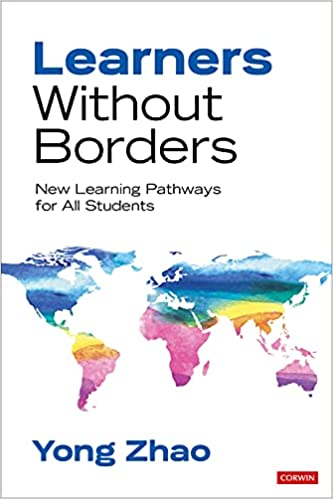




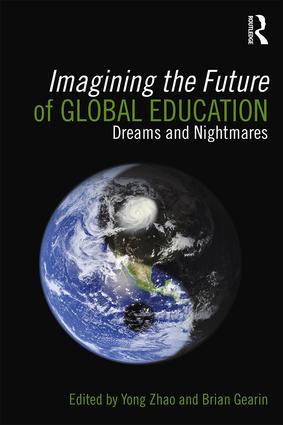
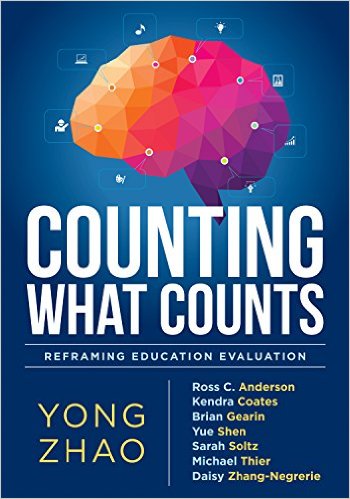


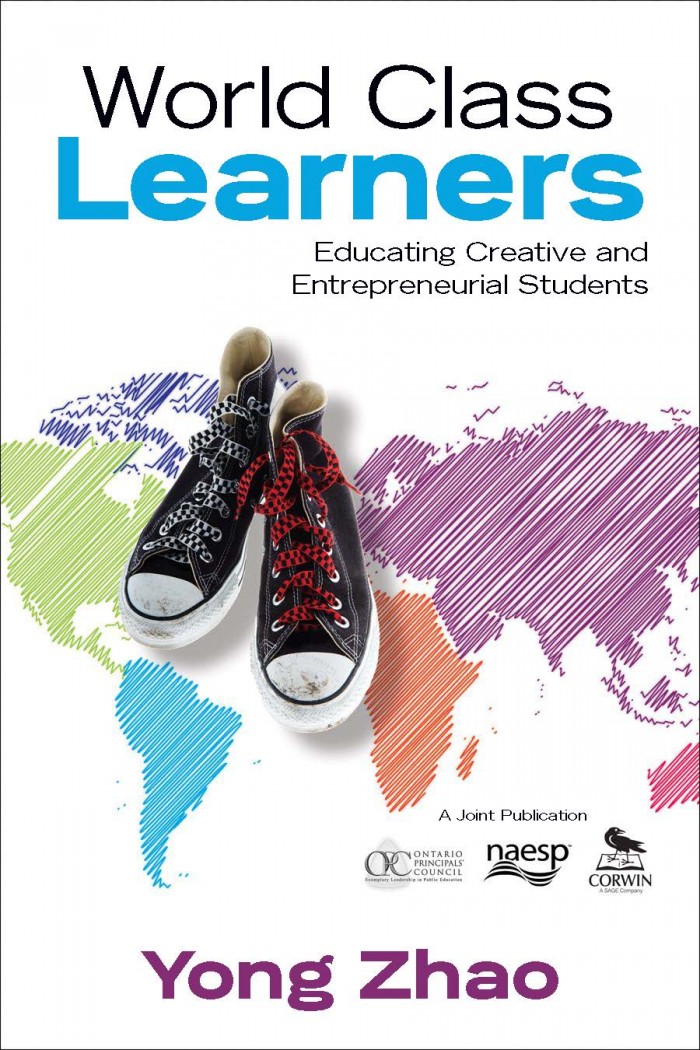


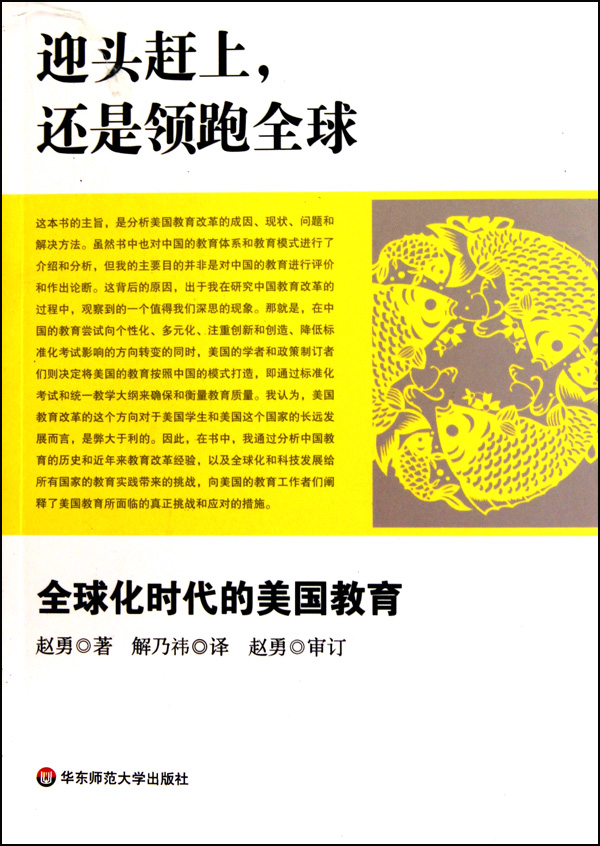











Feel free to comment:
The views expressed on this site are entirely my own. They do not represent my employer or any other organization/institution. All comments are subject to approval.